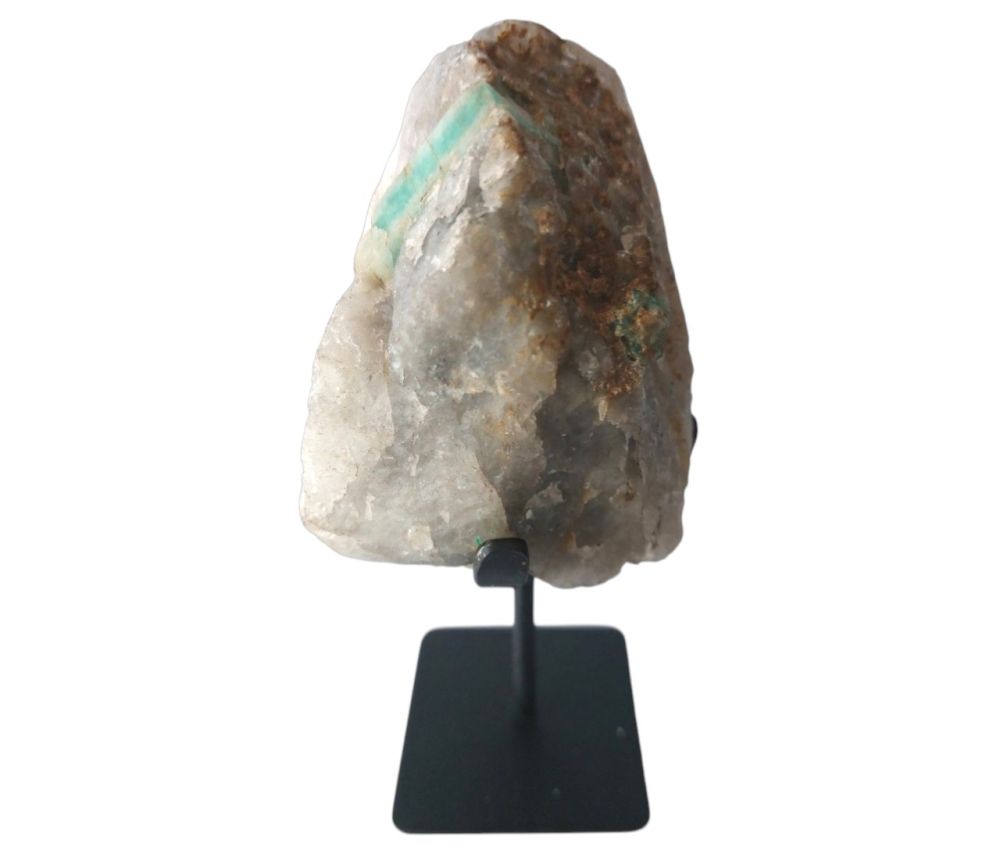We use cookies to make your experience better.
TimmersGems has a new website, existing customers also need to register again.
Emerald crystals on pedestal (0.3-1 kg) from Muzo in Colombia.
Beautiful green emerald (in whole or partial crystals) in mother rock
Availability:
In stock
SKU
122161
Emerald crystals on pedestal (0.3-1 kg) from Muzo in Colombia. is available to buy in increments of 2
Emerald is a type of beryl and is considered the most precious stone from the beryl group. The colouring substance is chromium and sometimes vanadium. The chemical formula is Be₃Al₂(SiO₃)₆. Intrusive magma and the metamorphic transformation of rocks combine to form the emerald. Deposits therefore occur in pegmatite corridors or in the vicinity thereof. The extraction of crystals takes place almost exclusively from the parent rock, where the emerald has grown in small corridors or on the walls of cavities. The specific weight of emerald is comparable to that of quartz, making it difficult to form alluvial deposits. The name emerald can probably be traced back to a Semitic language via Latin and Greek. The Greeks used the name not only for emerald but for various green stones. The emerald has always been considered the 'king of gemstones'. People knew about the emerald thousands of years before Christ, extracted it, and used it in jewellery, amulets, and art objects. Egyptian pharaohs' burial chambers, Pompeii, and Herculaneum have all yielded emeralds. Emeralds are also mentioned in the Bible: in the Revelation of John, there is mention of a "rainbow that looked like an emerald" around the throne in heaven. Special emeralds are part of treasures and museum collections. Numerous emeralds lie in shipwrecks on the bottom of the seas between America and Europe. The special and striking colour of this gemstone became synonymous with the officially recognised colour, emerald green. People often use the name as a metaphor for various countries. For instance, the English often refer to Ireland as the Emerald Isle due to its lush greenery. The Dutch East Indies were referred to as the Belt of Emeralds since Multatuli. The emerald is linked to the zodiac sign of Taurus and the month of May in astrology. The traditional gift for the 55th wedding anniversary in some cultures is an emerald. The emerald is one of the "nine gems" in the Thai Order of the Nine Gems.
| Dimensions | Divers |
|---|---|
| Country of Manufacture | Brazil |











